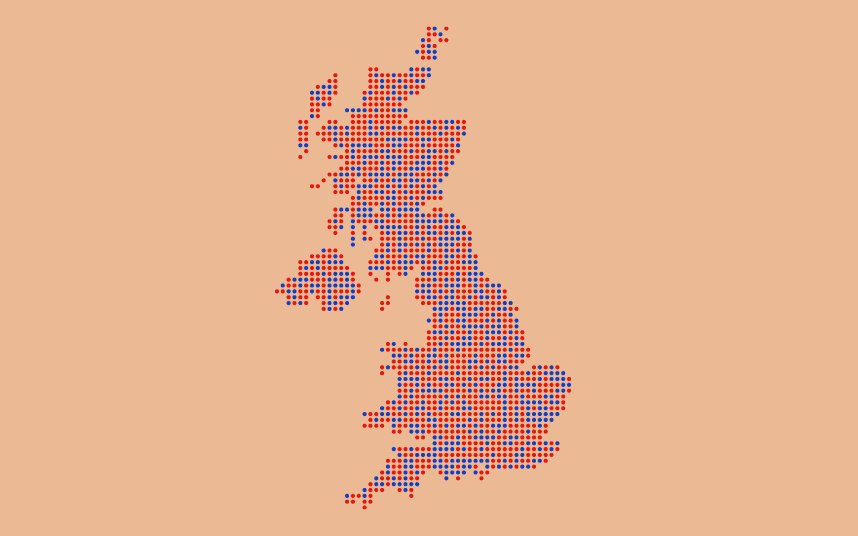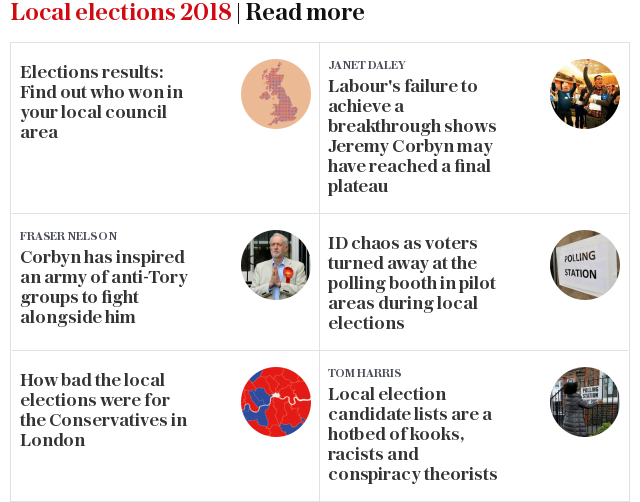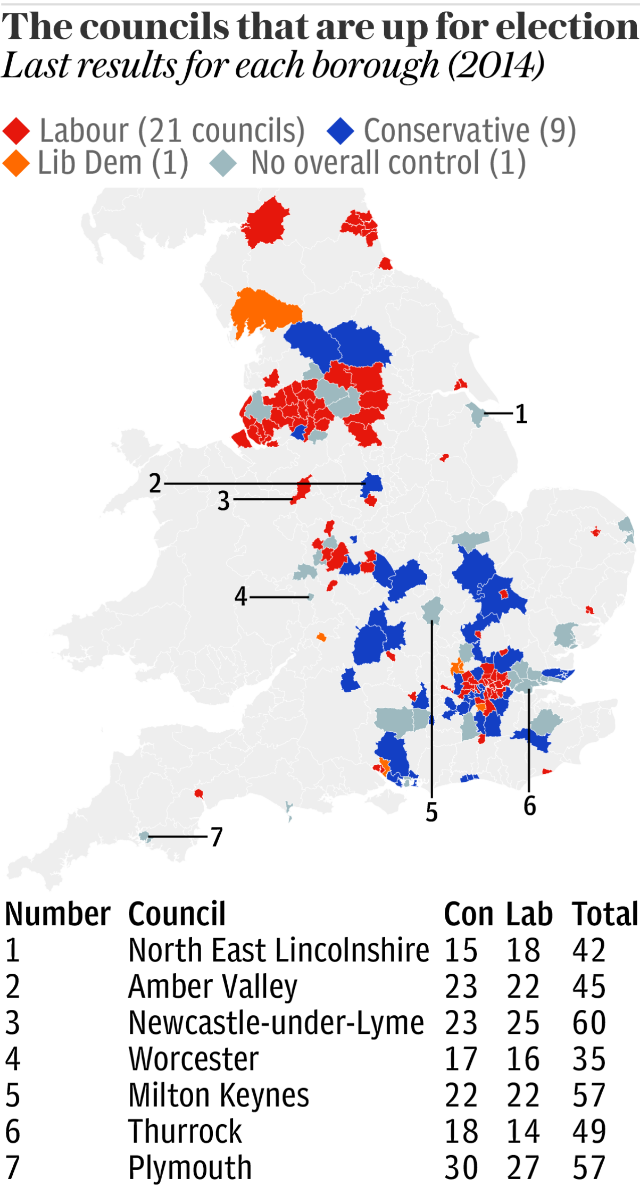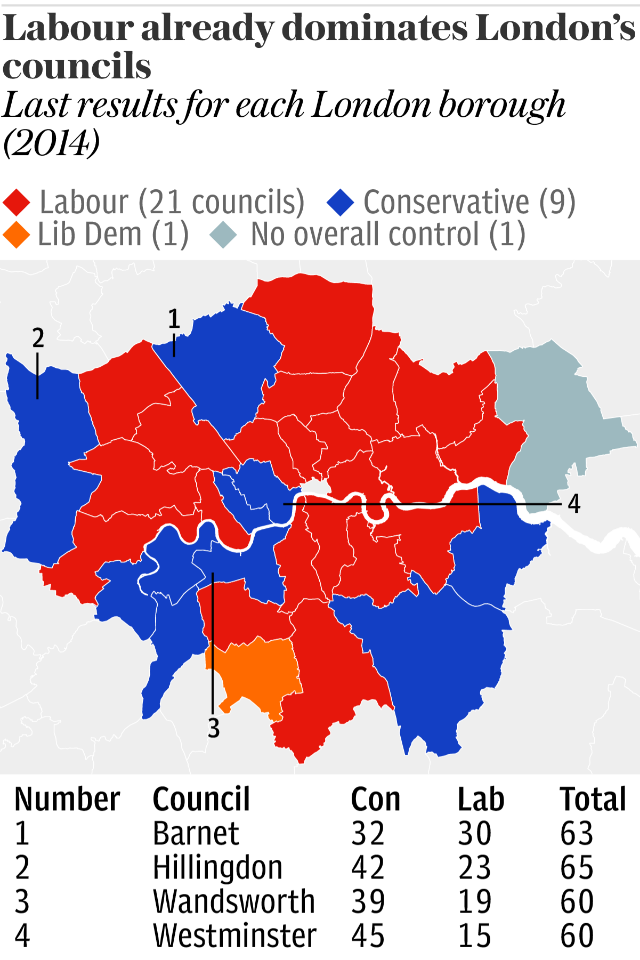Local elections 2018 polls: Latest predictions on what will happen and key seats to watch

The public have gone to polling booths across the country today as more than 4,300 council seats came up for grabs, in local elections that are expected to yield gains for Labour.
London and metropolitan areas dominate the vote, with these urban areas expected to back Jeremy Corbyn in greater numbers.
These councils last voted in local elections in 2014, when Ed Miliband led the Labour Party to success.
As a result, Labour already starts from a strong position - especially in metropolitan areas such as London - which means it will be reasonably hard for Jeremy Corbyn to make significant inroads.
But with the Conservatives enjoying a recent rise in popularity, and Labour in the midst of an antisemitism row, predictions are hard to make in local votes with low turnout.

What are the national polls saying?
Things have been close between Labour and Conversative parties in terms of polling since last year's General Election.
Labour has maintained a small lead over the Conservatives for most of the last year, with both parties dominating the political sphere with just over 40 percentage points.

But in recent weeks, with charges of antisemitism being made against the top of the Labour Party, the party's polling has slipped behind the Tories'.
The last polling average (of the previous five national polls) had the Conservatives ahead on 41.4 per cent, with Labour on 39 per cent.
Expect Labour gains
The fact that the Conservatives maintain a small lead nationally means little in an election that consists of lots of small pockets of local votes - especially when many of these votes are for Labour-leaning urban areas.
Labour will likely make local gains, especially in London where the Tories are expected to perform poorly, although the Conservatives may also make some ground in other areas in England.
This was confirmed by the newly-appointed Conservative Party chairman Brandon Lewis.
These are really difficult elections for us
Brandon Lewis
Mr Lewis told The House magazine: "These are really difficult elections for us. If you look at the electoral cycle, this is the point of the cycle that’s always difficult.
"The last time these [councils] were up in 2014, if you look at the numbers, Labour did very well. And obviously London is up and London is a very challenging dynamic for us. We’ve got work to do in London and elsewhere."
Of the 156 contests up for grabs in the election, there are:
32 London boroughs
34 Metropolitan boroughs (four where the whole council is up for election; 30 where a third is up)
17 unitary authorities (one where the whole council is up for election; 16 where a third is up)
67 non-metropolitan districts (seven where the whole council is up for election; six that are half up; and 55 that have a third facing a vote)
Six mayoral contests - in South Yorkshire (Sheffield City Region), Hackney, Lewisham, Newham, Tower Hamlets and Watford
Due to the fact these local authorities are spread out across the country, national trends in polling are of limited use. London, for example, is much more likely to return Labour candidates than the local authorities that border the capital.
This is why local election wins for Mr Corbyn in May do not necessarily mean that the Labour leader is on his way to Number 10.

Key seats to watch
There are 156 different contests today - and so when the results come in there will be a lot to watch.
London in particular is expected to be the setting of several Tory losses, with some projections suggesting that Theresa May's party will lose dozens of councillors - and a number of councils - across the capital.
Elsewhere, there are a number of councils that have razor-thin majorities for either of the major parties.
For example, the Conservatives only have one more councillor than Labour in the Amber Valley and Worcester councils - each of which have a third of their seats up for election.
In Milton Keynes, which also has a third of its seats up for election, both Labour and the Tories currently have 22 seats.
Labour is defending four councils where it only has two more seats than the Conservatives: Crawley, Newcastle-under-Lyme, Redditch and Calderdale. All of these areas voted Leave in the 2016 EU referendum, which might see the Conservatives get a Brexit boost to challenge Labour locally.

How badly will the Conservatives suffer in London?
If the polls are right, Theresa May's Tories will suffer in this year's local elections.
Labour is expected to take a number of councils from the Conservatives in the election - including the flagship Tory boroughs of Barnet, Wandsworth and Westminster.
Of the 32 London boroughs, Labour already controls 21 - but the party will hope to eat into the Tory tally of nine, with some pollsters predicting the Conservatives could lose as many as 100 seats across the capital.

The Telegraph has previously reported how councillors from Kensington and Chelsea have experienced a "big shock" on the doorstep in the wake of the Grenfell Tower blaze, while the Conservative campaign headquarters is said to be "panicking" about this borough - as well as wealthy, long-standing Tory borough Westminster - falling to Labour.
Further south, the Tories would be hit by the loss of Wandsworth due to it being Margaret Thatcher’s favourite council that prided itself on low council taxes. Labour won the Battersea Parliament seat in last year's election, and 75 per cent of the area voted Remain in the EU referendum, so many are predicting the council will turn red.
Barnet in north London is another Tory symbol that is under threat. It has been hailed as a model for efficiency savings and outsourcing in the recent years of austerity - gaining the nickname of "EasyCouncil" - and is now top of the Labour target list.
Then there is Hillingdon - the home of Boris Johnson's west London constituency - which could turn red with a surge of Labour support from its southern strongholds in the council.
The main issue for Labour, however, is the antisemitism row in which it's embroiled - with fears that it might keep Jewish Labour voters away on polling day. Time will tell how this plays out at the ballot box.

So what does this all mean for the national picture?
Here is the big warning about local elections: they are very poor indicators for national trends.
This is because they are a series of local votes in pockets of the country, and so any swings that we see do not represent the overall national trend. There are also local authority issues that people may vote on, even though they'd vote very differently on who they wanted to run the country.
In 2014, Ed Miliband led the Labour Party to success in these particular councils, but he then went onto to a shock defeat in the 2015 General Election.
Likewise, the Conservative Party made huge gains in the 2017 local elections, and then lost their majority in the national election a month later.
So even though there are bound to be some surprises on the night of May 3, it is unlikely to tell us much about whether Jeremy Corbyn can end up in Number 10.

